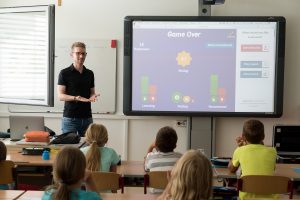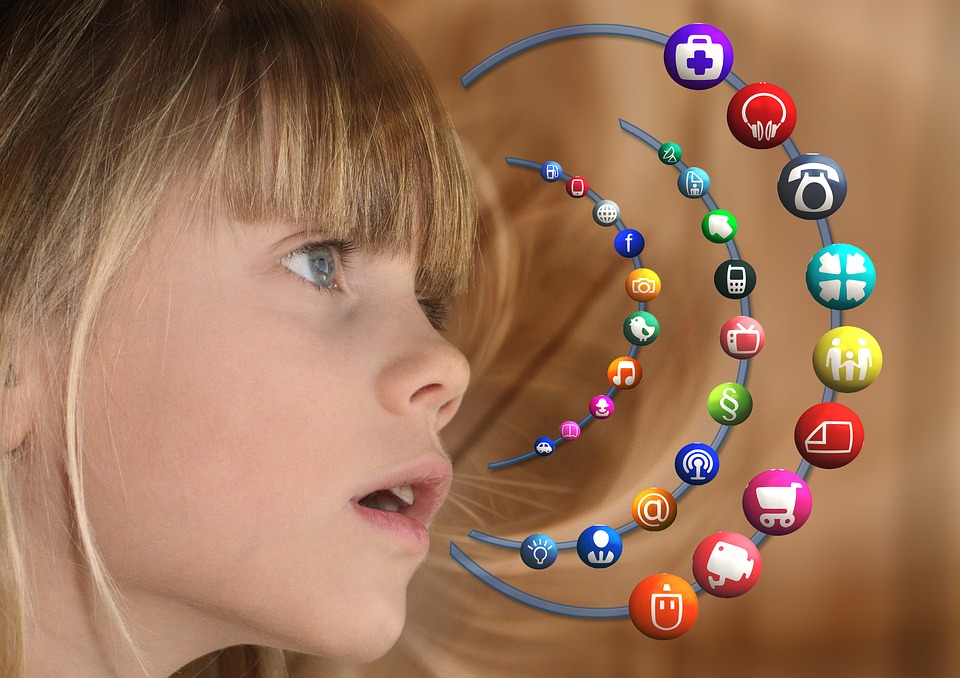Flashback to the 1990’s…… Schools were very generic in nature. You studied from textbooks and the exams were all in a paper format. There was a Black-&-White chalkboard, the teacher used to do a manual roll-call which sometimes took forever. Students used to go to school mostly on bikes, be dropped by cars or in a school bus. The parents had no way to communicate with the kids while they were commuting on their own. Patience was the name of the game as mobiles became mainstream much later and the communication revolution began only a decade back.

The whole education system has had a revamp since then. Today’s classrooms are much more technologically advanced and connected. Artificial intelligence (AI), machine learning (ML) and the Internet of Things (IoT) are all emerging (and buzz-worthy) technologies which have moved out of pure-tech circles and into the mainstream. The education sector is being revolutionized by applying these new solutions to age-old educational challenges. The case for IoT in the schools is stronger than ever before considering the pressures and competitive scenario the students face each day. The society has evolved and the need to do much more in a day has increased. Kids find themselves not just focused on academics but have other priorities that include sports, music, drama, etc. It’s more than justified to have technology help them in their quest for excellence and overall development. Devices such as digital pens and interactive whiteboards, readily available with IoT devices, are making remote learning practices convenient, simple to use, and every bit as effective as the traditional classroom method.
IoT goes to school

From online courses to integrated mobile technology, more efficient teaching methods that are IoT-enabled will continue to supplement pencils, paper and chalkboards. As instructional approaches advance, learning opportunities expand. Today’s digital textbooks are so much more interactive than their older counterparts with audio, visuals, interactive tests and supplemental learning activities now are all now part of the offering. This is a significant achievement in terms of the fundamental learning process, and promises to include students who didn’t respond well to the classical teaching methods of present. Not only will it have a fundamental change to the learning capabilities, but gone is the age of 40 lb. backpacks on a 70 lb. child. The digital age will be beneficial on both body and mind for the youth of the world.
Additional new features for schools coming from connected devices will be things like security via the use of smart cameras and intrusion detection sensors, climate control optimization via the use of smart HVAC systems, and Smart lighting systems which are providing cost savings

The use cases are many. It’s no more a scene from a sci-fi movie as students quickly scan editable text from books, papers and other documents directly into a phone, tablet or computer and even listen to it while it is being scanned. The verbal aspect helps students learn and memorize better. Then there are student smart cards that can be presented to an authenticating reader and linked via IoT to an access control system. Types of cards include ones for physical access to facilities, photo I.D. (with hologram or UV printing), time and attendance, logical access (to monitor use of electronic data like coursework, e-learning resources, printers and Internet), loyalty and membership, payment (for vending machines, printing, photocopying) and health/medical data (blood type, emergency contacts).
Scoring big – Inside and Outside the classroom
A few of the aspects where IoT is changing the game:
Interactive Whiteboards, Cameras and Videos, Tablets and e-books, Student ID cards, 3-D printers, Smart HVAC systems, Electric Lighting/maintenance, Attendance Tracking, Security – wireless doorlocks, emergency call stations around campus, Temperature control and Automated everyday tasks are just scratching the surface of possibilities.

Through applications and sensor wristbands, teachers can take instantly take student attendance. When students sign into a learning app or scan their wristband at the door, a notification can be generated to notify the teacher or attendance recorder of which students are present and which are not. Smart Schools can also program a notification to be sent to parents if a student misses class or has extended unexplained absences. Using real-time communication tools, they can share homework assignments with their parents so they can stay on top of less communicative students.
Consider this scenario. There are 27 kids in an elementary class. All of them have an IoT enabled badge. As soon as they come in the class, the mobile device/tablet of the teacher beeps and instantly records all who are present. It saves precious time and effort as opposed to an extended, low-tech roll call. The age of a teacher butchering a name and having that name be echoed by fellow students for the year to come is now a thing of the past.
The teacher’s mobile app can have all the student names on the screen. Next to every name there can be parameters which tracks things about the student. Top skills, areas of improvement, overall focus, attendance, special needs, or literally almost any KPI can be showcased on the dashboard. At just a quick glance, today’s teachers can ascertain the strengths/weakness of each kid in the class. They can even seamlessly post comments on the students profile which parents can access through the app can to read those comments in real time. They are then in a much better position to communicate with the teacher directly and have deeper discussion with their children about what’s happening in school.

The students’ wristbands/smart cards used to take attendance can act as an access pass to the school as well. Aside from tracking where a child is located, these wristbands are a way to prevent unauthorized people or intruders from entering the building. Instead, staff and students would be permitted to enter the building with their IoT wearable.
In addition to using wristbands, school and college campus can connect wireless door locks via IoT technology. Administrators can engage these locks within seconds during an emergency situation. Some locks even have video analysis options that register and recognize people who are allowed into the building and who are not. Top use cases are interactive devices, security-focused technology and energy-saving resources. Interactive devices include wearables that track activity or monitor engagement in class as well as mobile hotspots and laptops that make internet accessible to students without access at home.
IoT is bringing new opportunities for schools. From aiding teachers to securing buildings, connected devices are improving and enhancing the classroom experience. As more schools embrace IoT, students will reap the benefits.
The case for Cost Reduction
Higher Education institution campuses can utilize IoT innovation to become more connected and automated, thereby reducing costs campus-wide.
- Building Automation — Campuses can reduce energy costs and promote energy efficiency at a classroom level or campus wide with intelligent control centers allowing sensors to monitor and control heating, ventilation, air conditioning and lighting systems.
- Lighting — Smart lighting can cut costs and lower energy consumption by adjusting output to meet seasonal or local conditions, while also sending preventative maintenance data to staff.
- Waste — Connected schools could better utilize maintenance support by using sensors to set efficient waste collections and recognize areas of improvement.
However, schools must be aware of the potential data breaches and cyber-security attacks that come along with IoT. Schools should work with security experts when setting up these solutions and should not just use any device off the shelf. The preference should be for enterprise or government grade solutions that have multiple levels of security built into every solution.
The bottom line is that the IoT has the chance to keep all of us more connected, engaged, secure and proactive.
Anything which is revolutionary becomes so when it has the ability to change lives for the better. Emerging technologies like AI and IoT are no different. Wearables are now capable of measuring the vitals of a student in order to interpret energy, focus and concentration levels. Based on the real time data from their student, teachers can react by changing the activity in order to stimulate students who are lagging. It can even enable schools and colleges to design better nutrition programs which help facilitate learning based on the data that is collected on students energy levels.

We can now track stress levels of students, and make early interventions if students are potentially dealing with mental health issues. Schools can contribute to the lives of our current and future generations in a much more holistic way rather than just be academic institutions. They can easily become centers of excellence in a few years time. After all, the whole point of education is to mould people by providing life-long values and build their 3Q’s –Â Intelligence Quotient (IQ), Emotional Quotient (EQ) and Adversity Quotient (AQ)Â that help them lead satisfying personal and professional lives later on.


